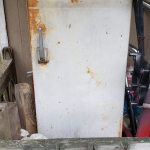What is a Bad Debt Expense?
Content
In either case, bad debt represents a reduction in net income, so in many ways, bad debt has characteristics of both an expense and a loss account. It includes billings, invoices to suppliers, bank reconciliation, https://time.news/how-can-retail-accounting-streamline-your-inventory-management/ requiring comprehensive and streamlined procedures. Taking the concept of bad debt expense further, let us illustrate a situation where bad debt is recognized based on the aging of debtors.
- Calculate what amount of your accounts receivable it represents in each category and add them to get your total bad debts.
- It can misstate income if your bad debt journal entry occurs in a different period from the sales entry.
- In our example, if the prior year had a balance of $5,000, the amount required to adjust the allowance for doubtful accounts would be $5,500.
- Also, this helps companies to recognize customers who defaulted on payments in order to avoid similar occurrences in the future.
- Others say that bad debt expense should be classified as a non-operating expense because the company itself has not caused the problem, it’s not recorded on the income statement, and it is not an operating expense.
The method also doesn’t align with the GAAP accounting standards and the accrual accounting matching principle. We haven’t posted any other transactions, but you can see we didn’t record the write off of the prior year’s sale as an expense in this year. We already “recognized” the expense in year one when we recognized the revenue from all that work we did. (Assume all those others are paying or have paid. Now there are new revenues and new accounts receivable, but right now we’re just trying to isolate this one issue). D. Prepare the journal entry for the balance sheet method bad debt estimation.
How to Determine the Cash Realizable Value in Accounting
For the sake of this example, assume that there was no interest charged to the buyer because of the short-term nature or life of the loan. When the account defaults for nonpayment on December 1, the company would record the following journal entry to recognize bad debt. Bad debt expense is one way of accounting because some customers will not pay their accounts. It’s a reasonable and accepted accounting principle, and it’s crucial to properly account for this kind of debt expense by defining, notating and calculating it accurately. In addition, maintaining accurate records of doubtful debt expenses ensures that companies comply with standard accounting principles and avoid penalties. Accounts receivable is a permanent asset account while sales is a revenue account that resets every year.
- For such a reason, it is only permitted when writing off immaterial amounts.
- Based on experience, a certain percentage of your ‘customers on credit’ will form bad debt.
- This contra-asset account reduces the loan receivable account when both balances are listed in the balance sheet.
- The table below shows how a company would use the accounts receivable aging method to estimate bad debts.
The revenue cycle refers to the entirety of a company’s ordering process from the time an order is placed until an invoice is paid and settled. The inability to apply payments on time and accurately can not only lock up cash, but also negatively impact future sales and the overall customer experience. Every business owner retail accounting knows — or should know — that there will be some customers who can’t or won’t pay their bills. Conservative accounting principles require that this unfortunate fact of business life be reflected in a company’s financial statements. An allowance for doubtful accounts is always maintained in a contra asset account.
Allowance Method for Bad Debt Expense
It can also suggest that the company is having trouble collecting customer payments. As of January 1, 2018, GAAP requires a change in how health-care entities record bad debt expense. Before this change, these entities would record revenues for billed services, even if they did not expect to collect any payment from the patient. Once this account is identified as uncollectible, the company will record a reduction to the customer’s accounts receivable and an increase to bad debt expense for the exact amount uncollectible. Businesses that use cash accounting principles never recorded the amount as incoming revenue to begin with, so you wouldn’t need to undo expected revenue when an outstanding payment becomes bad debt.
They are considered an asset because they are a financial resource that can be converted to cash in the near future, once the customer has paid. Gain global visibility and insight into accounting processes while reducing risk, increasing productivity, and ensuring accuracy. Close the gaps left in critical finance and accounting processes with minimal IT support.
Company
A small discount can go a long way in appreciating and encouraging your clients to pay on time or even in full beforehand. For example, A company can offer a 1% discount to clients paying in full while placing an order and a 0.5% discount if they pay before the credit period ends. Let’s consider a situation where BWW had a $20,000 debit balance from the previous period. For the taxpayer, this means that if a company sells an item on credit in October 2018 and determines that it is uncollectible in June 2019, it must show the effects of the bad debt when it files its 2019 tax return. This application probably violates the matching principle, but if the IRS did not have this policy, there would typically be a significant amount of manipulation on company tax returns. For example, if the company wanted the deduction for the write-off in 2018, it might claim that it was actually uncollectible in 2018, instead of in 2019.
- When recording bad debt expense on the income statement, however, you’ll just record the adjustment value.
- For instance, Customer A might routinely clear 100% of bills within days, but Customer B might have a tendency to default.
- This shows that the expenses are directly linked to a specific invoice as this is not a reduction in sales but rather an increase in expenses.
- The problem with this accounts receivable balance is there is no guarantee the company will collect the payment.
- Here, a certain percentage of sales is recorded as bad debt expenses during each accounting period.
- However, at some later date, the balance in the allowance account must be reviewed and perhaps further adjusted, so that the balance sheet will report the correct net realizable value.







